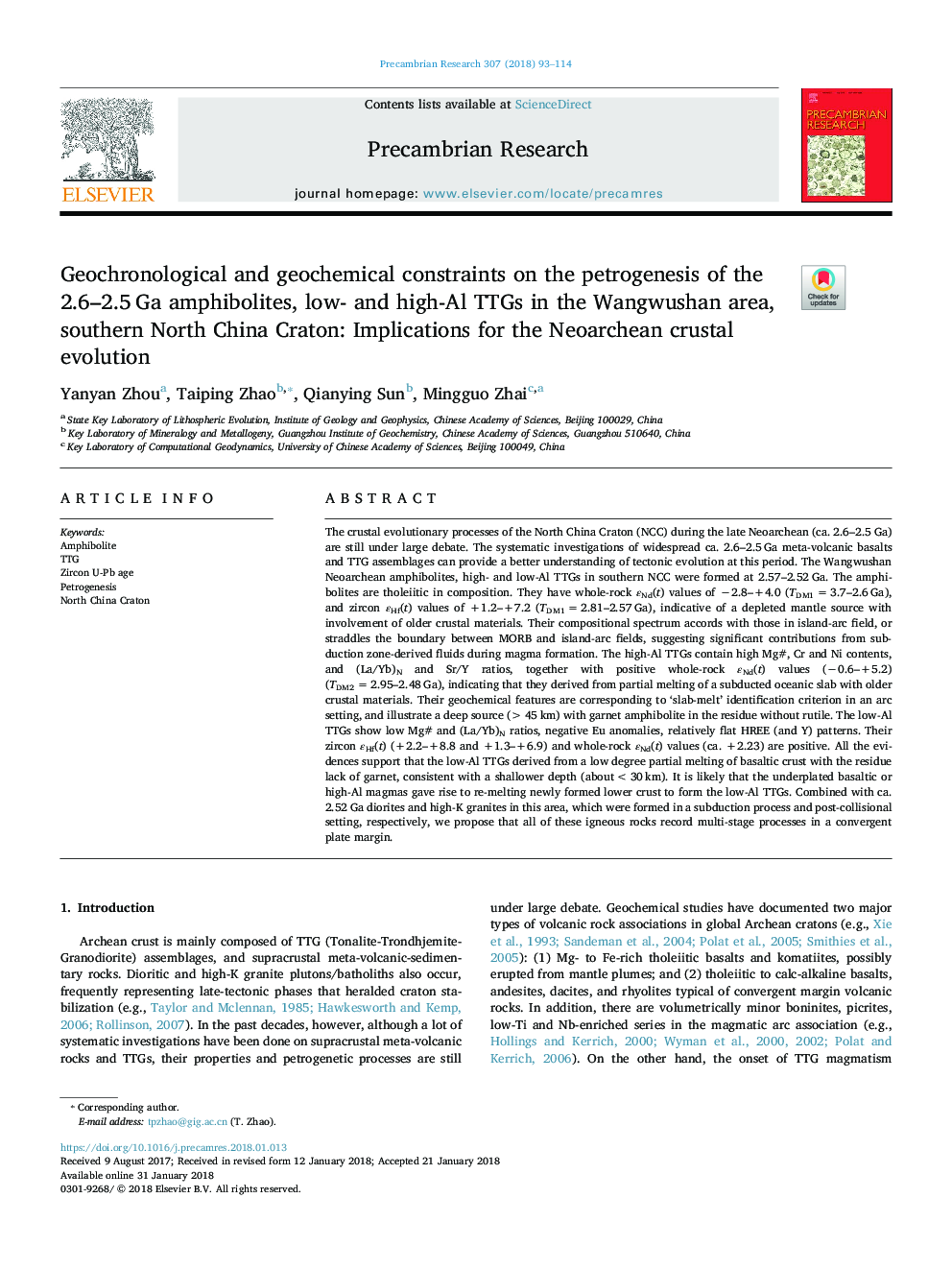| کد مقاله | کد نشریه | سال انتشار | مقاله انگلیسی | نسخه تمام متن |
|---|---|---|---|---|
| 8912628 | 1639568 | 2018 | 22 صفحه PDF | دانلود رایگان |
عنوان انگلیسی مقاله ISI
Geochronological and geochemical constraints on the petrogenesis of the 2.6-2.5â¯Ga amphibolites, low- and high-Al TTGs in the Wangwushan area, southern North China Craton: Implications for the Neoarchean crustal evolution
دانلود مقاله + سفارش ترجمه
دانلود مقاله ISI انگلیسی
رایگان برای ایرانیان
کلمات کلیدی
موضوعات مرتبط
مهندسی و علوم پایه
علوم زمین و سیارات
ژئوشیمی و پترولوژی
پیش نمایش صفحه اول مقاله

چکیده انگلیسی
The crustal evolutionary processes of the North China Craton (NCC) during the late Neoarchean (ca. 2.6-2.5â¯Ga) are still under large debate. The systematic investigations of widespread ca. 2.6-2.5â¯Ga meta-volcanic basalts and TTG assemblages can provide a better understanding of tectonic evolution at this period. The Wangwushan Neoarchean amphibolites, high- and low-Al TTGs in southern NCC were formed at 2.57-2.52â¯Ga. The amphibolites are tholeiitic in composition. They have whole-rock εNd(t) values of â2.8-+4.0 (TDM1â¯=â¯3.7-2.6â¯Ga), and zircon εHf(t) values of +1.2-+7.2 (TDM1â¯=â¯2.81-2.57â¯Ga), indicative of a depleted mantle source with involvement of older crustal materials. Their compositional spectrum accords with those in island-arc field, or straddles the boundary between MORB and island-arc fields, suggesting significant contributions from subduction zone-derived fluids during magma formation. The high-Al TTGs contain high Mg#, Cr and Ni contents, and (La/Yb)N and Sr/Y ratios, together with positive whole-rock εNd(t) values (â0.6-+5.2) (TDM2â¯=â¯2.95-2.48â¯Ga), indicating that they derived from partial melting of a subducted oceanic slab with older crustal materials. Their geochemical features are corresponding to 'slab-melt' identification criterion in an arc setting, and illustrate a deep source (>45â¯km) with garnet amphibolite in the residue without rutile. The low-Al TTGs show low Mg# and (La/Yb)N ratios, negative Eu anomalies, relatively flat HREE (and Y) patterns. Their zircon εHf(t) (+2.2-+8.8 and +1.3-+6.9) and whole-rock εNd(t) values (ca. +2.23) are positive. All the evidences support that the low-Al TTGs derived from a low degree partial melting of basaltic crust with the residue lack of garnet, consistent with a shallower depth (about <30â¯km). It is likely that the underplated basaltic or high-Al magmas gave rise to re-melting newly formed lower crust to form the low-Al TTGs. Combined with ca. 2.52â¯Ga diorites and high-K granites in this area, which were formed in a subduction process and post-collisional setting, respectively, we propose that all of these igneous rocks record multi-stage processes in a convergent plate margin.
ناشر
Database: Elsevier - ScienceDirect (ساینس دایرکت)
Journal: Precambrian Research - Volume 307, April 2018, Pages 93-114
Journal: Precambrian Research - Volume 307, April 2018, Pages 93-114
نویسندگان
Yanyan Zhou, Taiping Zhao, Qianying Sun, Mingguo Zhai,